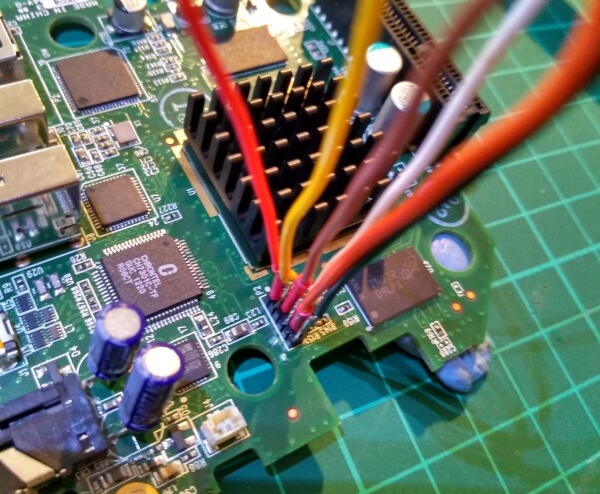There was a time when SPARC CPUs were the sole realm of pricey Sun workstations, but now you can put one on an FPGA with just a little trouble. The problem is you need a fairly big FPGA which isn’t always cheap unless someone goes out of business and you get lucky. [Ttsiodras] picked up a Pano logic thin client. Pano went under and their entire inventory is out on the surplus market at cheap prices. With a little FPGA magic, you can turn a few bucks into a SPARC-based computer.
The insides of the workstation have a Spartan 6 FPGA inside and you’ll need to solder in some JTAG wires, but that shouldn’t put anybody here off. Of course, the Spartan 6 isn’t the newest tech so you’ll have to get an old version of the Xilinx tools but that’s not hard either. However, there is a strange irony you’ll need to be aware of if you use Linux.
Xilinx provide their WebPack tools free and you can download older versions. However, the versions aren’t always the same. The last tools that support Spartan 6 on Linux don’t support the specific device used in the Pano G2. However, the Windows version does. In a strange twist though, the Windows version installs a Linux virtual environment to run the tools!
The story doesn’t end there, though. [Ttsiodras] wanted to run the tools directly in Linux and had quite the adventure trying to get it all running. He did, but it was a fun detective story and you can read about it in the post. If you want to use Windows to configure the FPGA you probably won’t care much, but it is still an interesting read. We found it especially funny that the free WebPack software was still node locked to a particular network card — we’ve had similar problems with FPGA tools from other vendors.
LEON is a SPARC CPU used in a lot of European spacecraft. That’s the CPU that eventually drove the Pano for [Ttsiodras]. The FPGA is large enough that he was able to get two 50 MHz cores in the box. You can even simulate the CPU before committing it to silicon.
Unfortunately, the build doesn’t support the network, the 128 MB of RAM on the board or the USB ports. So you won’t quite be ready to use this as your daily Linux workstation. There is, however, a remote gdb interface and a cross compiler, so you can certainly write code for it. If you don’t want to solder, this technique might be helpful.
Using a ready-made CPU can be a significant jumpstart to a project. LEON, RISC-V, or even NIOS give you ready-made tools which is a good thing as long as your project isn’t a custom CPU.
















If these thin clients have audio and decent graphics capability… classic arcade emulation with much of the hardware replicated in the FPGA?
There is quite a community built around fpga boards running arcade hardware. MISTer is the big one I think.
They do and it’s been done https://github.com/zephray/VerilogBoy/tree/refactor/target/panog1, https://github.com/skiphansen/pano_man. It’s no MISTer, but it’s lots cheaper. It’s a smaller but growing community.
There’s a chat room here: https://gitter.im/panologic/community
The G2 variant is much more powerful than the G1 variant one used for VerilogBoy, with at least an XC6SLX100 and sometimes a XC6SLX150, providing three to four times more logic elements. It also has two HDMI/DVI outputs, four times the RAM at 128 MB, and 8 times the flash at 16 MB.
It doesn’t have the ARM core the MiSTer has, and less RAM, but it is in a pretty similar performance class and is usually less than $50 on eBay.
Unlike Mister the supply of Pano boards is finite and no more will ever be made as the company is dead… just something to keep in mind.
E.g.: https://forum.mystorm.uk/t/retro-computing-with-blackice/262
Now all one needs is some software to put a spark in your SPARC.
*Ahem* several NASA missions are flying LEON processors, too. Parker Solar Probe for one!
Why do I suspect you’re harboring some stories of cool hackery? You should share… :-)
That’s cool… from whta I understood ESA was a big user of Leon also.. I imagine these are the rad hard Atmel parts some of them even include a small rad hard FPGA.
Also, don’t forget TEMLIB.org… it might be possible to shoehorn your quadcore leon into the temlib system so you can get the rest of the sparcstation hardware and compatibility with most vintage Sparc operating systems like NextStep RedHat 6.2 and others…
What goes around, comes around. The first SPARC implementation was on a fujitsu FPGA cicra 1987.
The LEON3 SPARCv8 core is used in the Skytraq GPS/GNSS chips, which are notable because there’s an Arduino library and toolchain to run user-written code alongside the GPS engine.
You get a 100MHz core, a floating-point unit, 200K of RAM, and a bunch of GPIO. Oh, and precise time, of course. They’ve released it under the name Navspark, and the Navspark Mini is $36 for a pack of 6. (Not sold individually.)
No affiliation, just think it’s a neat product, and perhaps the toolchain will help other folks playing with the LEON series.